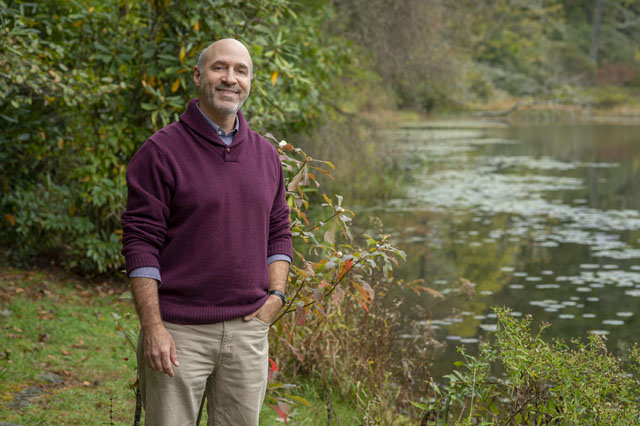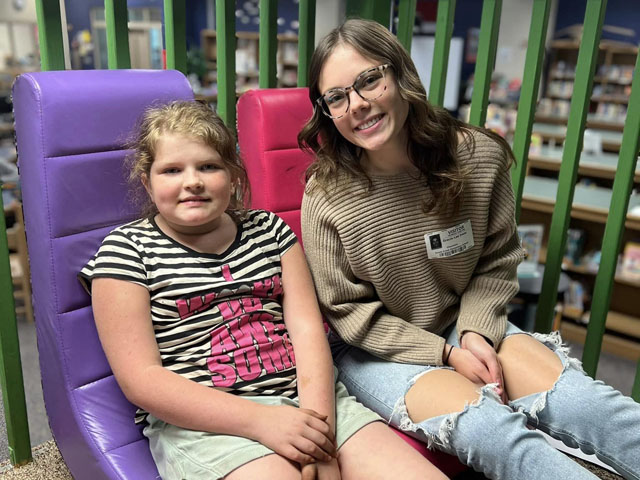Andrew Renfro
05 Aug 2024
Combining his passion for photography with his love of nature
By BRENDON VOELKER

Take only photographs, leave only footsteps” is the sustainability model for nearly every public land across the country, whether it be a state park, national park, national forest, or similar. There are some, however, that are better at capturing those photos. Local conservationist Andrew Renfro, a dedicated advocate for nature, happens to be a little better at that than most of us. A Cashiers-Highlands native and resident near Lake Glenville, he has enjoyed photography for much of his life. If you browse through most editions of this magazine, you will likely see his unique touch somewhere along the way.
When asked when and where he likes to shoot most, there is no clear-cut answer. In the summer, he dedicates his time to capturing the beauty of pollinators and open spaces with wildflowers. In fact, this time of year, you can often find him photographing the blooms at McKinney Meadow, a native pollinator garden near the crossroads of Cashiers maintained by the Highlands-Cashiers Land Trust. In the spring, he enjoys documenting the diverse selection of fungi, often with the use of zoom and macro lenses based on the situation.
Similarly, the abundance of wildlife and incredible biodiversity in southern Appalachia makes for some interesting subjects that fill out beautiful parts of the state. The Peregrine Falcon, in particular, is an often sought-after choice. A species once endangered has since been protected and is now thriving in areas including the cliffs of Whiteside Mountain, Looking Glass Rock, Yellow Mountain, and others. As the fastest animal on the planet with a dive speed up to 220 mph, it is easy to imagine the challenge such a stunning creature could bring. Fireflies also fall into that mix, and he values the opportunity to make that connection about why not mow everything and #leavetheleaves. Overall, he is an advocate of working with nature and finding ways to support life and bolster biodiversity, as opposed to bulldozing it.
As for his gear, he shoots with a Canon 5D Mark III, a DSLR camera that is becoming less popular with the advancements in mirrorless camera technology. This camera was preceded by a Mark II that was destroyed while shooting the Milky Way against a meteor shower outside of Yellowstone National Park in 2021. He frequently uses a Sigma zoom lens and sometimes a wider angle for waterfall shots and long-exposure photography. Of course, he always has his macro lens on hand for smaller subjects. Fortunately, his family shoots in the same category, so they trade lenses when needed. Even his grandfather, who can be credited with getting the entire family into photography, still photographs birds as a member of the Audubon Society.
Without a doubt, Andrew’s favorite memory was the photo of the supermoon rising over Devil’s Courthouse on Whiteside Mountain as he proposed to his wife. While he did not take the photo, his family was set up on Rhodes Big View along Highway 64 as he surprised Abby with the occasion. The photo went viral, leading to nationwide coverage and even news interviews asking about the experience and what led to it. While the planning took some time, it was one of his most rewarding experiences, even though he was the subject and not the photographer.
While photography may seem easy on some levels, editing and processing photos is one of his biggest challenges and is quite time-consuming. Sometimes, you can spend hours merging dozens, if not hundreds, of photos together to accomplish what you want. As a perfectionist, he wants what he sees in his head to be what he and others ultimately see in the end product.
As for influences, Anna Norton is one local photographer who sticks out instantly and is known for how her work tells the story of her relationship to place. George Masa is another influence. He was a friend of the late Horace Kephart, a writer, librarian, and early advocate for the creation and continued protection of the Great Smoky Mountain National Park. Masa’s photos and Kephart’s words ultimately inspired Rockefeller to write the check that allowed for the purchase of lands for public stewardship. Masa visited and photographed the plateau in 1929, and the Highlands Historical Society retains many of his photos. Kephart also helped plan the Appalachian Trail through the park, a 70+ mile stretch of singletrack along the now 2,200-mile trail.
You will frequently find Andrew outside exploring the temperate rainforest of southern Appalachia, where he enjoys kayaking, fishing, hiking, cooking, foraging, gardening and plenty more. He is often accompanied by his two dogs, Trip and Rhody, the latter named for the native rhododendron that fills the understory of our forests. Even on the fly, he always has his phone or camera on hand and believes it important to photograph the human impact on our landscape, though the reality is not always glamorous.
While he enjoys traveling and exploring our treasured public lands and is considered an award-winning photographer, he still prefers to spend most of his time on the Plateau. Outside work, he enjoys eating at Los Vaqueros restaurant in Highlands and the iconic Whiteside Brewery in Cashiers. He also likes packing a picnic with his family and hanging out at one of the many unique places around the area.
Andrew encourages people to “look around, slow down, and appreciate what’s around you.” His role as the Land Conservation Director at the Highlands-Cashiers Land Trust helps him further that pursuit, teaching others about the land and helping protect it for future generations.
Andrew can be found on Instagram as @barenfro. You can also join him on one of the many outings available through HCLT.













